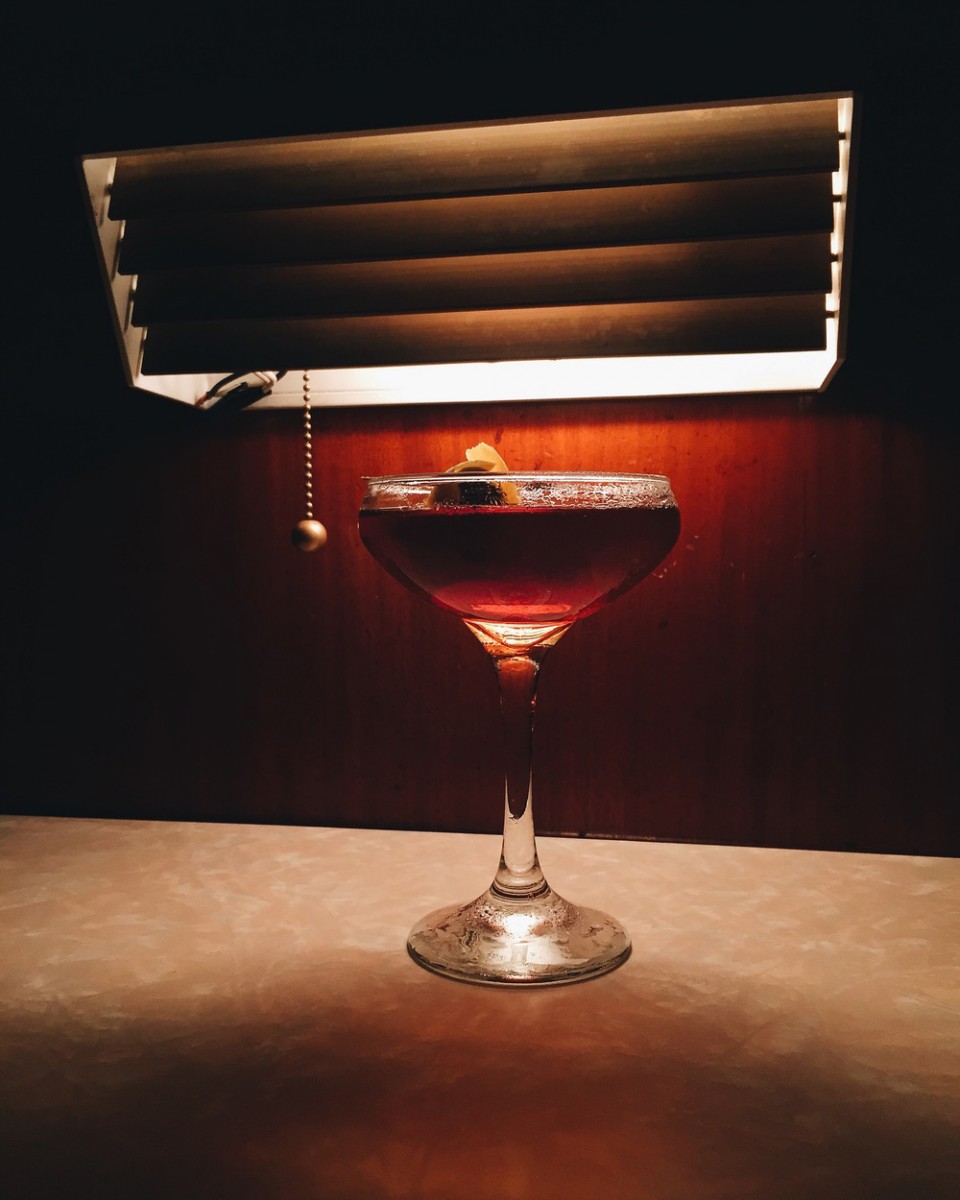The Old Fashioned, Martini, and Manhattan have been whittled down, through repeated interpretation in bars around the world, to forms of near-perfection. Their omnipresence on cocktail menus everywhere puts each drink served under the scrutiny of repeated experience, a process which has happily led the Old Fashioned to shed its muddled cherries, orange slices, and soda water, and the Martini its apple, chocolate, and lychee prefixes. The Manhattan, too, has been distilled down to its quintessence, the shining exemplar of the classic best enjoyed from a corner seat amid the quiet buzz of a grand old dimly lit cocktail bar.
Classic, stoic, and composed, the Manhattan is a drink of understated elegance, garnering respect from bartenders everywhere and busting through the absurd notion that “manly” drinks can’t be served in a coupe. There are, however, quite a few ways to make it, and some are far better than others.
Here are some of the ways you may have slipped up while ordering (or making) this great drink.
You made it with bourbon.
Use Scotch in your Manhattan, and you have a Rob Roy. Make it with Irish whiskey, and it becomes an Emerald cocktail. Perhaps, to clear up confusion, there should be a name for a Manhattan made with bourbon (and may I propose the Louisville Cocktail as a working title?). Yet however delicious all of these variations are—and they truly are delicious—if you order a Manhattan from me without specifying a spirit, I’m reaching for the original: a bonded (100-proof) rye whiskey, which has the spicy, dry, boozy backbone to stand up to the so-often cloying taste of the sweet vermouth.
You didn’t measure your ingredients.
It took a week of work in a closet-sized lab down at the International Culinary Center for Dave Arnold and me to hone in on the precise Manhattan recipe we wanted to bottle and serve at Booker & Dax. Every miniscule change seemed to mutate the drink into a whole new monster of mediocrity—and mediocrity is the greatest curse of a proven classic cocktail. Too boozy, too cloying, not enough bitters, too diluted—every misstep, measured down to the milliliter, created a mildly off-putting problem that, in the context of such an elegant and exacting cocktail, fully derailed our enjoyment of it. The bottom line: your specs need to be spot-on. Cocktail recipes are all simple ratios of ingredients, so whether you use a proper cocktail jigger, or a tablespoon, or a measuring cup, or a shot glass, just make sure you get the right stuff in the right amounts into your drink. (For a jaw-dropping selection of jiggers, spoons, strainers and every other fun piece of bartending gear you could ever need, check out www.cocktailkingdom.com.)
You used the wrong vermouth.
Let’s say you’re already familiar with the fact that wine-based vermouth needs to be refrigerated and used up within a couple of weeks. Now, which vermouth works best in a Manhattan? As cocktail guru Jim Meehan is fond of saying, “A cocktail is only as good as it weakest link”—so if you choose a brilliant whiskey to mix with, you’d better not mar the final outcome by tainting it with less-than-stellar vermouth. There are subtle and not-so-subtle differences between even the better vermouths—Carpano Antica Formula is vanilla- and spice-driven, for instance, while Punt e Mes is more bitter and dry—so simply saying “sweet vermouth” in your recipe is like equating Manischewitz with a first-growth Bordeaux. To combat the dry and spicy rye flavors in a Manhattan, keep a small bottle of the fuller-bodied and rounder-flavored Carpano—and leave the cooking vermouth on the shelf.
You twisted or cherry’d erroneously.
If you’ve mixed up four-year-old vermouth and Jack Daniels, and shaken the snot out of it (as you never, ever should with all-alcohol cocktails!), please, by all means, top it off with a neon-red, carved-from-wax, ice-cream-sundae-topping maraschino cherry. If, on the other hand, you have assembled a cocktail with anything like the proper ingredients, do yourself a favor and toss in a couple of brandied marasca cherries—or express a fresh orange twist over the top to give your drink a nice aromatic citrus note. Admittedly, cherries are the classic garnish for this stalwart cocktail, and after soaking in the bottom of a glass of whiskey, vermouth, and bitters, they are a damn delight to eat; but the orange twist has a way of balancing a Manhattan that is second to none.
So which is better? Ivy Mix, bartender extraordinaire and premium Manhattan maker at the world-class Brooklyn cocktail bar Clover Club, ended my personal garnish dilemma monumentally and forever, by giving me both. I still ask my bar patrons their preference, but never again will I choose one or the other.

The Manhattan
INGREDIENTS:
3 Dashes of Angostura Aromatic Bitters
1 oz Carpano Antica Formula Sweet Vermouth
2¼ oz Rittenhouse Bonded Rye Whiskey
(2 ounces is traditional, but the additional ¼ ounce tips this cocktail into better balance.)
METHOD:
Build in a pint glass, stir with ice, strain into a coupe, and garnish with orange twist (or cherries, OR BOTH).
Last month we welcomed renowned NYC bartender Tristan Willey to our Cocktail Hour series.
You can find Willey these days behind the wood at Brooklyn’s Long Island Bar, or dropping professional knowledge from time to time right here on Sidewalk Hustle.